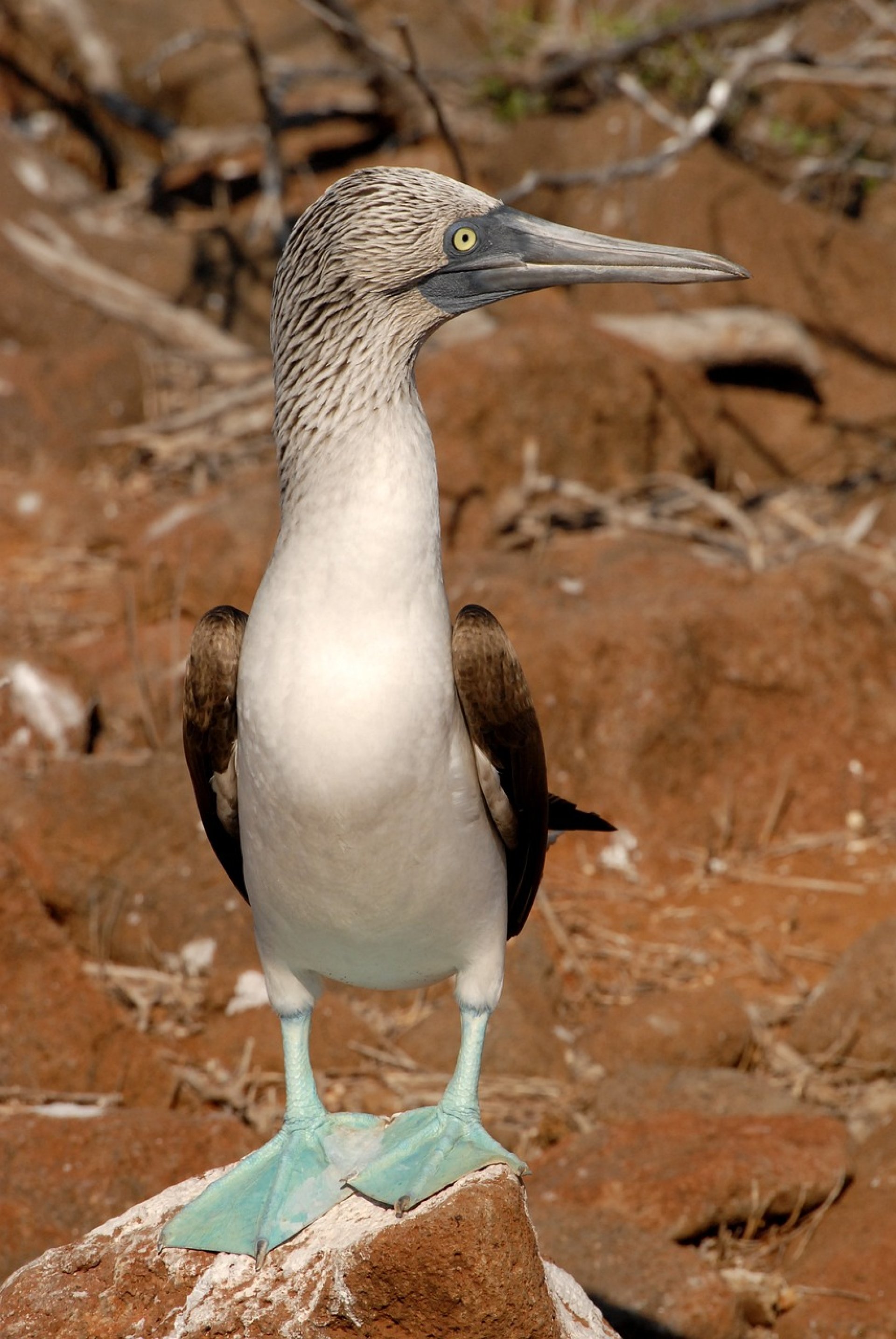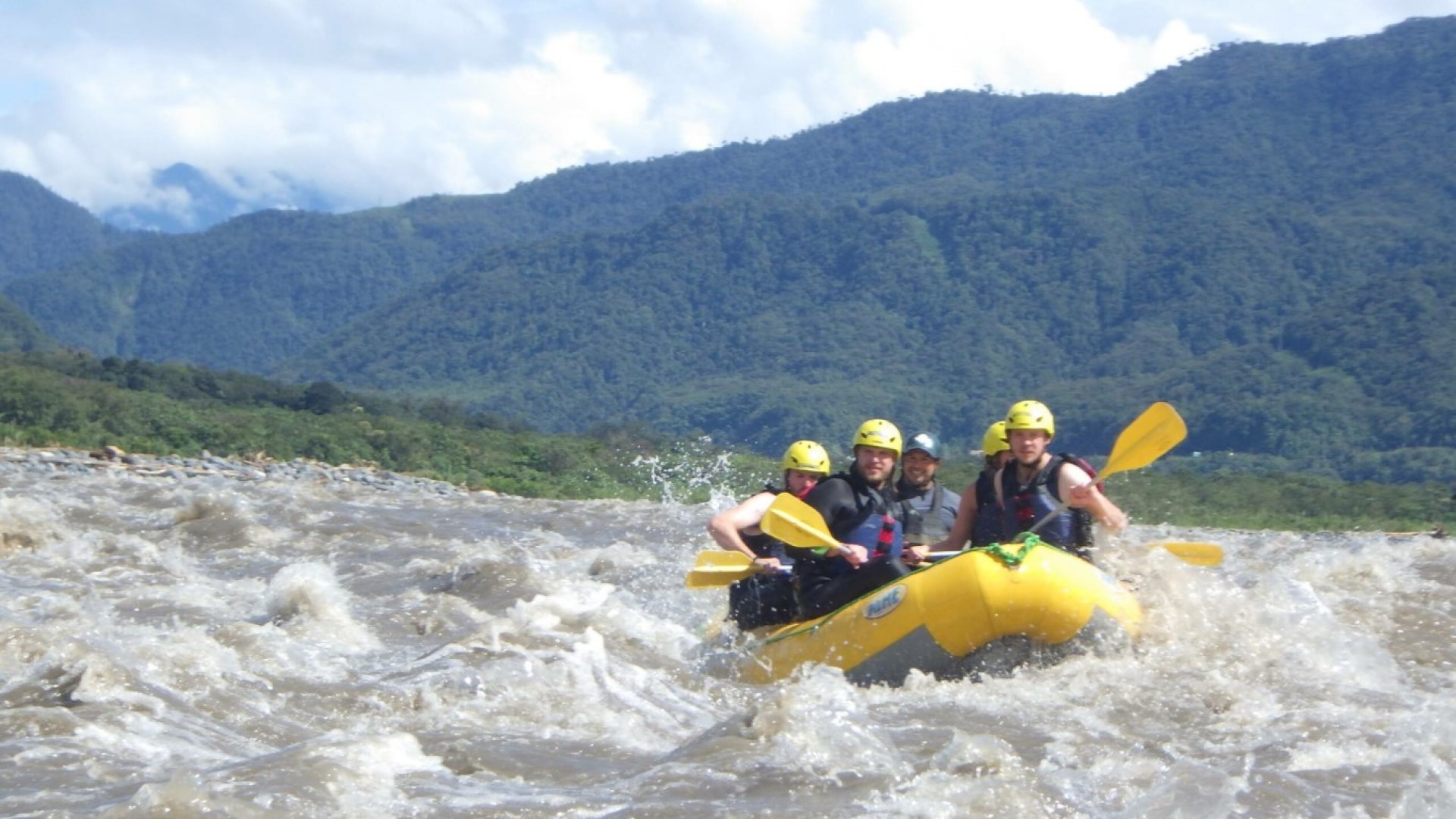Room Luxury Plus | Casa Gangotena
The Luxury Plus room is located on the second floor, at the southwest end of the property.

The Luxury Plus room is located on the second floor, at the southwest end of the property.

Upon arrival at the reception, our manager will welcome you with a refreshing energizing drink and provide a brief introduction to the tropical rainforest, the available spa therapies, and the various activities and sites you can explore during your stay at Suchipakari Eco-Lodge.

Visit the amazing Galápagos Islands to discover their unique flora and fauna with this wonderful island hopping experience.

The Pastaza River, located in the central region of Ecuador, is one of the most popular rivers for rafting in the country, especially in the surroundings of Baños de Agua Santa.

Swim with sharks, turtles and sea lions in crystal-clear waters and walk on pristine beaches surrounded by wildlife.

The San Martín Canopy in Baños de Agua Santa is one of the top attractions for adrenaline and nature lovers. This route is known for its thrilling high-altitude rides, crossing spectacular landscapes like the canyon of the Pastaza River.
From
$2700 PP
The Aida Maria Yacht has a capacity for 16 passengers, offering a combination of style and affordability for cruises in the Galapagos Islands. Each of its double cabins is equipped with a private bathroom, air conditioning, and a spacious outdoor deck to enjoy the Galapagos sun. The Aida Maria yacht began its operations in 1997, offering tours in the Galapagos Islands as a charter yacht as well as for individual travelers.
Its design focuses on efficiency and comfort, with spacious social areas and 8 double cabins, providing great comfort for your Galapagos cruise. With a maximum capacity of 16 passengers in double cabins, it offers all amenities, including air conditioning, hot water, and a desalination system that produces its own water throughout the day.
Cruises range from 5, 6, 8, to 15 days.
Aida Maria is one of the few yachts in the Galapagos Islands that was entirely handcrafted from local wood, making it one of the most traditional and classic yachts in the Galapagos. Its owners are 100% local and have been offering tours in the Galapagos since the 1960s.
For a classic experience in the Galapagos Islands on one of the best yachts with excellent service, an experienced captain, friendly crew, and great food, the Aida Maria yacht is your best option in Galapagos.
Day 1
Santa Cruz
Morning:
Flight from the Ecuadorian mainland to the islands on a 90-minute morning flight. As you prepare to land in Baltra, look out the window. The landscape below will seem otherworldly; you’re truly landing in a place like no other.
The Galapagos Islands are completely unique, and you're about to see why. Your bilingual naturalist guide will greet you at the airport and wait for you after customs.
During lunch, your guide will introduce you to the islands, specifically the flora and fauna you'll encounter at our first destination, Las Bachas Beach.
Afternoon: Bachas
On the white sands of Las Bachas, you’ll get an up-close view of a sea turtle nesting area, as well as a lagoon frequented by pink flamingos and other migratory birds.
Afterward, cool off with a dip in the beautiful blue Pacific Ocean. As this is our first night together, the crew will invite everyone for a pre-dinner cocktail aboard the yacht before the welcome dinner.
If the night is clear, as it often is, the stars will shine brightly; look for the Southern Cross, the Big Dipper (upside down!), and Orion.
Day 2
Genovesa
Morning: Darwin Bay
A beautiful bay due to the great diversity of seabirds nesting in the mangroves that dominate the area. These include red-footed boobies, Nazca boobies, swallow-tailed gulls, Galapagos petrels, seabirds, Darwin's finches, Galapagos mockingbirds, and doves.
Afternoon: Prince Philip's Steps
We will climb 25 meters of stairs to one of the best bird nesting sites on the islands. We’ll have the opportunity to snorkel, hike, and take a ride on a dinghy.
Day 3
Morning: Bartolomé
Bartolomé Island, which reaches 114 meters at its highest point, is one of the most photographed views in the archipelago. This island is relatively young and volcanic, making it sparsely populated; only a handful of hardy plant and animal species have survived long enough to call this lava land home.
Afternoon: Sullivan Bay
After visiting Bartolomé Island, you’ll visit nearby Sullivan Bay. Early in the century, a massive lava flow reached the sea, and today you can walk across this vast expanse of black lava, admiring its ripples, bubbles, and ropes frozen in time.
Day 4
Morning: Black Turtle Bay
Black Turtle Bay is a red mangrove lagoon on Santa Cruz and a breeding ground for many sharks and rays. It’s also a great place to observe turtles during mating season. You might see large groups of resting white-tipped reef sharks, schools of golden rays, and spotted eagle rays, as well as some juvenile hammerhead and blacktip sharks. The water is very calm, so we often use paddles instead of noisy dinghy motors to move around the area.
Afternoon: Dragon Hill
After this visit, you’ll sail for a couple of hours to Dragon Hill, where you’ll make a dry landing on lava rocks. Dragon Hill is a small bay on the west coast of Santa Cruz, named for the many land iguanas living in the area. Land iguanas are endemic to the Galapagos Islands, where they’ve found good nesting and breeding grounds.
Day 5
Santa Cruz
Morning: Santa Cruz Island (Indefatigable) – Charles Darwin Research Station
Santa Cruz is one of the inhabited islands you'll visit during this itinerary. Puerto Ayora, with a population of around 25,000 people, is home to the Charles Darwin Research Station and the headquarters of the Galapagos National Park, famous for its tortoise breeding programs. After this visit, passengers ending the cruise will head to the airport for their departure flight; transfers are pre-arranged.
Afternoon: Santa Cruz Island (Indefatigable) – Highlands
After visiting the station, you’ll travel by bus to the highlands for a walk through the enormous lava tubes and also have the unique chance to see giant tortoises in their natural habitat, quite close to you. After this activity, there will be free time to explore the town of Puerto Ayora on your own.
Day 6
Floreana
Morning: Post Office Bay (Floreana Island)
Wet landing at the historic Post Office Bay to learn about the human side of the islands, the early inhabitants, and the story of the first barrel. But first, a dinghy ride will take you to nearby islets to observe sea lions, rays, sea turtles, boobies, and possibly the Galapagos penguin.
Afternoon: Punta Cormorant (Floreana Island)
After lunch, we’ll disembark at Punta Cormorant (wet landing) for an easy hike and to see flamingos inhabiting a brackish lagoon, as well as other birds like ducks, stilts, shorebirds, etc. For those who enjoy aquatic activities, there’s excellent snorkeling at Devil's Crown, an eroded islet off Punta Cormorant.
Day 7
Española
Morning: Española Island (Hood) — Punta Suárez
Punta Suárez is one of the most wildlife-rich areas in the archipelago, with a long list of species found along its cliffs and sandy or pebble beaches. The most iconic is the Galapagos albatross, which nests here from April to December. In addition to this enormous bird, this island is also home to Hood mockingbirds, Galapagos doves, and Galapagos hawks. Several types of reptiles, including the brightly colored marine iguana and the large lava lizard, are unique to this island. When the waves are big, Punta Suárez is also the site of a spectacular blowhole, with a jet of water shooting 30 meters into the air.
Afternoon: Española Island (Hood) — Gardner Bay
Gardner Bay lies on the eastern coast and features a magnificent beach. This white-sand beach is a perfect spot for a colony of sea lions and is also an important nesting site for sea turtles. Around the nearby small islets, snorkelers will find plenty of fish and, at times, sea turtles and sharks.
Day 8
San Cristóbal
Morning: Isla Lobos (San Cristóbal)
It takes about an hour by boat from Puerto Baquerizo Moreno to reach Isla Lobos. This is a small quiet area, separated by a channel from San Cristóbal Island, and is an excellent spot for snorkeling. After a dry landing and a short walk, you can see sea lions, marine iguanas, and blue-footed boobies in various places on the island. End of the cruise, passengers will take the return flight at the indicated time.
• All daily meals
• Accommodation on board
• Island visits according to the itinerary
• Bilingual guide (English and Spanish)
• Galapagos National Park entrance fee: 100 USD.
• INGALA Transit Control Card: 10 USD.
• Airfare to Galapagos from 465 USD.
• Extra drinks, tips, airport taxes, personal expenses.
From
$2700 PP